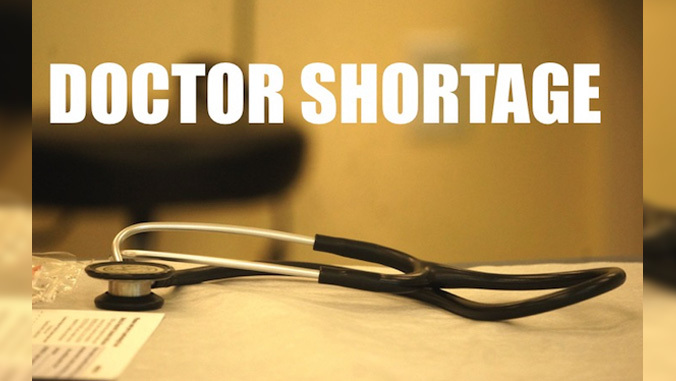
Already in dire need of more doctors, Hawaiʻi’s physician shortage was exacerbated by the COVID-19 crisis. According to the final Hawaiʻi Physician Workforce Assessment Project Report for 2020 (PDF) conducted by the University of Hawaiʻi at Mānoa John A. Burns School of Medicine (JABSOM) and submitted to the Hawaiʻi State Legislature in December 2020, the pandemic has challenged continued physician practice in Hawaiʻi and is expected to increase the relative shortage of physicians for the state for the next several years as older physicians leave their practices.
Out of the 989 physicians offices surveyed, 44% said that the coronavirus pandemic disrupted their practice in the form of temporary and permanent clinic closures, early retirement, increased telehealth practice, altered operating hours and locations and reduced patient volume.
The statewide physician shortage remains between a range of 710 and 1,008. The higher number (1,008) is projected when researchers accounted for island and specialty specific needs. This year, the supply of practicing doctors (in full-time equivalents) is 2,812, down from 2,974 in 2019. At least 110 physicians retired in 2020, at least 139 left the state, 120 decreased their work hours and 8 passed away. Of the active physicians, 46% are ages 55+, 21% are ages 65+ and one is 90-years-old. In addition, women make up more than one-third of the workforce.
County results
The physician shortage rose across all counties from 2019 to 2020:
- Oahʻu: 377 to 475
- Hawaiʻi island: 230 to 287
- Maui: 153 to 185
- Kauaʻi: 60 to 61
Primary care, which includes family medicine, internal medicine, pediatrics and geriatrics, continues to represent the largest shortage statewide (412 FTEs needed) and on all islands, along with colorectal surgery, pathology, pulmonary, infectious disease, allergy/immunology and hematology/oncology being the largest subspecialty shortages statewide by percent of estimated unmet need.
Due to COVID-19, many physicians elected to retire or decrease their practicing hours. Although the number of active physicians may rebound when the pandemic is contained, the shortage of 1,000 physicians will be difficult to mitigate even if all the physicians returned to full-time practice.
Looking ahead
Moving forward, there are efforts being done to assist doctors through the ongoing pandemic as well as efforts to both grow and retain the physician workforce in the state.
Tripling the size of the UH medical school (with medical school branches on all islands) and residency programs is the long term solution, but is expensive.
“Until this can happen, we need to make practice more enticing for physicians in Hawaiʻi. This means better reimbursement (which has been decreasing over the last few years), less busy work or administrative requirements, incentives to work in Hawaiʻi (such as loan repayment or housing stipends) and a supportive environment (from patients, institutions and colleagues),” said JABSOM Director of the Hawaiʻi/Pacific Basin Area Health Education Center Kelley Withy.
Withy added, “One thing that everyone can do for their doctor is say, ‘Mahalo.’ It’s not easy to be a physician in paradise, but the patients make it worth it!”

